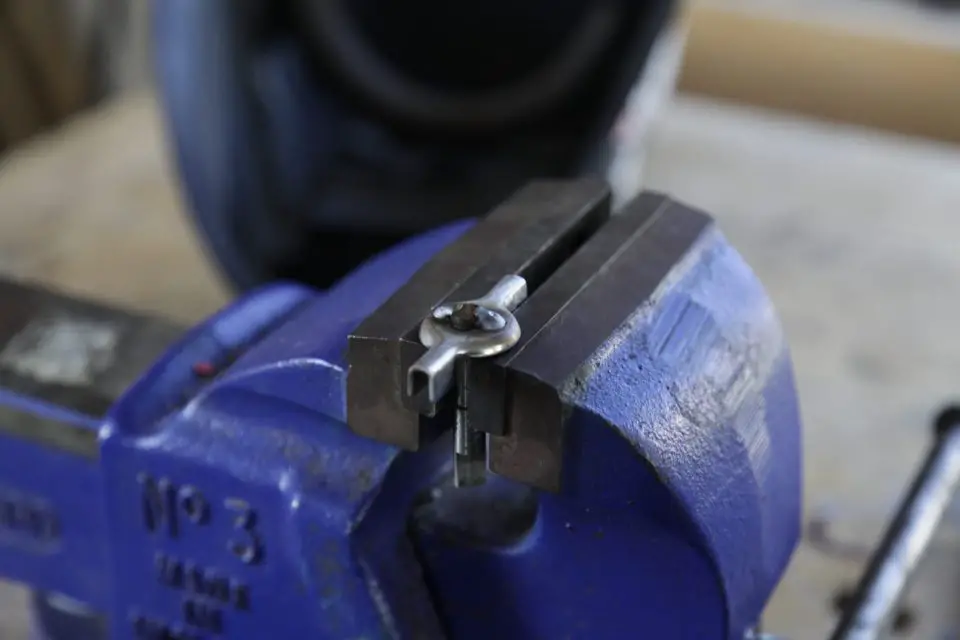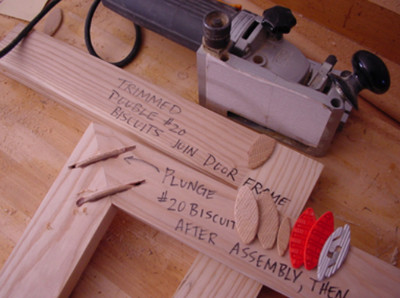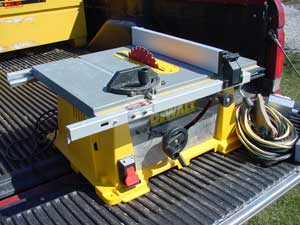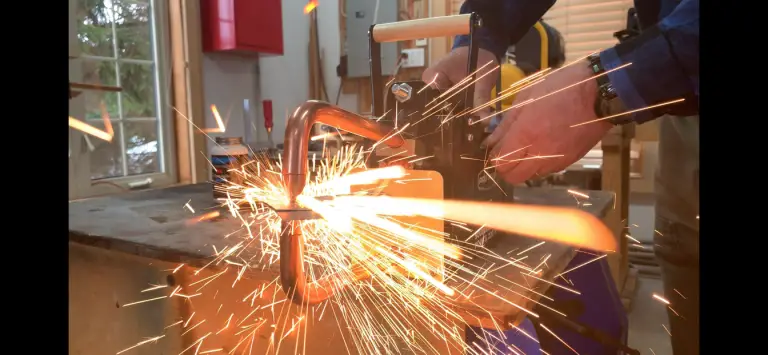
After faithfully producing hundreds of loaves of bread over a decade or so, the spindle on our hardworking household bread maker broke a while back. And while this sounds like bad news, it all turned out pretty well in the end. In addition to the smell of bread baking in the house again, I’ve also got that great old feeling I always get when my workshop and I manage to fix something even better than it was originally. And in this case neither the smell nor the feeling would exist without my wire-feed MIG welder. You can see the repaired shaft below.
Bread Maker Repair
The problem with the spindle was the way the arms were fastened to the shaft. You can see both the spindle and the arms in my vise, above. The design came from the factory with a flat spot on the shaft that engaged with a flat spot on the arm ring, with both parts locked together with a little snap ring. These parts were mechanically connected, but not truly joined together. This system worked okay, but movement between the parts during operation made the fit of the flat spot and arms sloppy over the years. Eventually, the snap ring finally rusted and broke right in the middle of a baking session. No bread that day.
Our model of bread maker isn’t made any more, and some time surfing did lead me to a US supplier that sells entire new pans with shafts, even for older machines. I ended up buying one, then realized that a couple of minutes work with my welder would keep the old one going, too. Now we’ve got two pans with shafts for our trusty bread maker, but there’s no doubt in my mind which is my favourite.
I can’t count how many times I’ve made good things happen with my wire-feed welder – some big, some small. It’s one of those things that you might buy for a specific, big job or hobby you have planned, then find you use it again and again for little things you could never have thought of. None of these little things would justify buying a welder and learning to use it, but once you’ve got the tool all kinds of little opportunities (and big ones) open up.
A MIG welder is the easiest welding machine to learn, and it works well on both thick metal and thin. Click here for a video of the overall MIG process.












